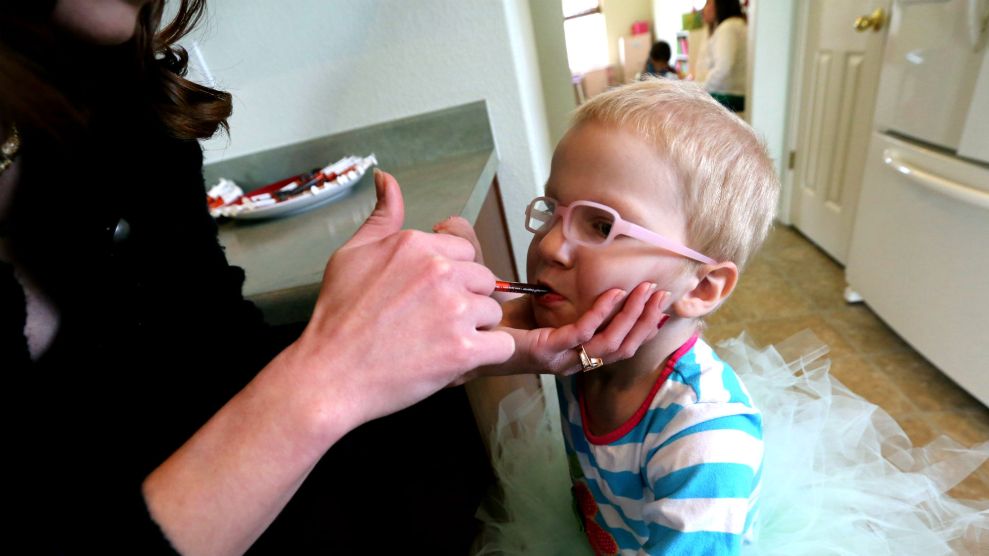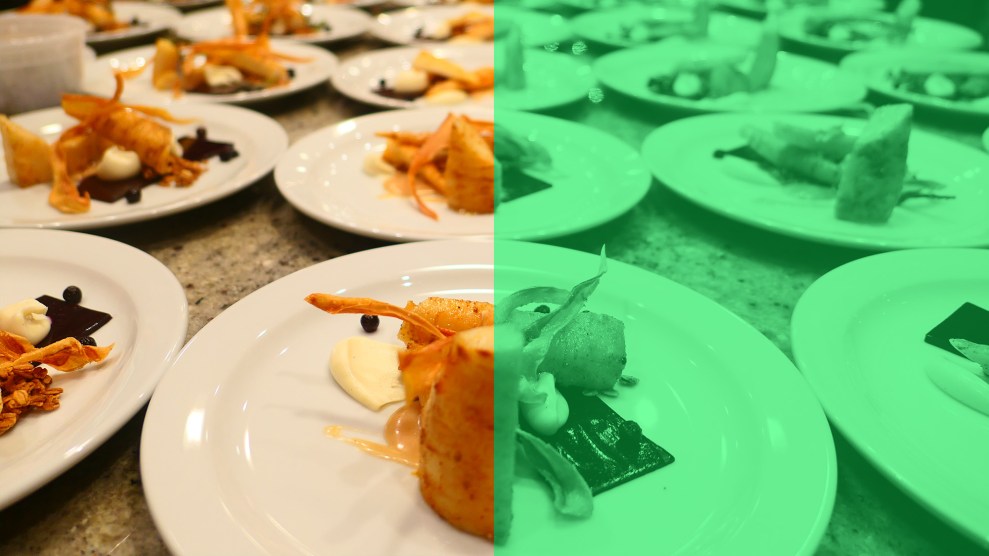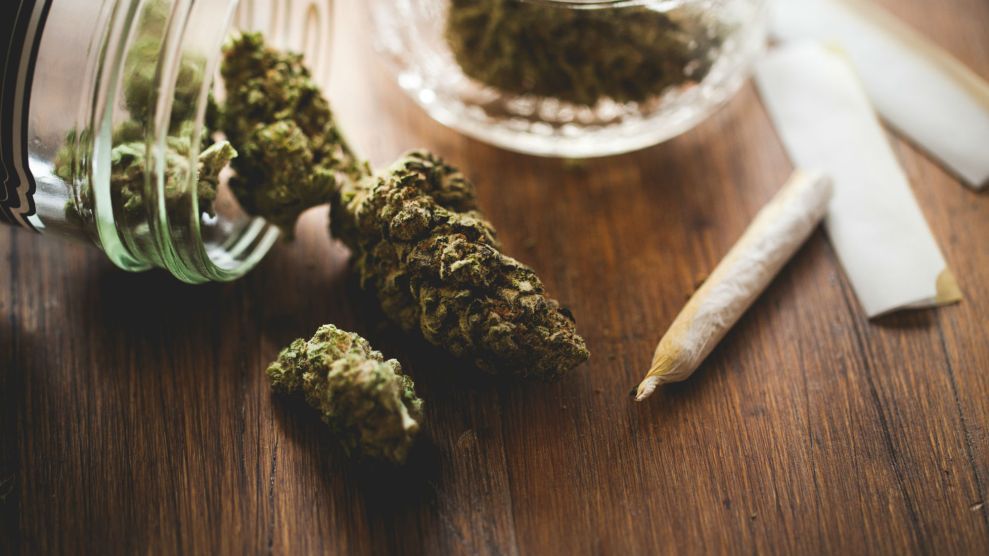
MmeEmil/Getty
There’s something fundamentally social about consuming cannabis, whether that’s smoking a bowl with a circle of friends, passing a joint around at a concert, or attending an exclusive, West Coast cannabis-infused dinner party. But all that social interaction begs the question of etiquette, and in the new world of legalized cannabis, it can be easy to make an accidental faux pas.

“Higher Etiquette” by Lizzie Post
The Post Institute
Luckily, Lizzie Post, the great-great-granddaughter of American etiquette legend Emily Post, wrote a book to help even a cannabis novice navigate the social environment of legal weed. The book, Higher Etiquette: A Guide to the World of Cannabis, from Dispensaries to Dinner Parties, which landed on bookshelves on Tuesday, confronts users’ common cannabis conundrums and other burning questions: ‘Do I take the first hit?’ or ‘How much do I tip a budtender?’ And ‘What should I expect at a weed wedding?’
“It’s safe to say that cannabis culture is baked in etiquette, has been for a long time,” Post writes in the opening chapter of Higher Etiquette, “and goes far beyond puff-puff-pass.”
Here are 10 tips from Post’s new book:
1. First of all, it’s “cannabis,” not “marijuana.”
“There is an entire lexicon associated with cannabis culture,” Post writes, “and there are differing views on what words and phrases are appropriate within the culture.” Of all the terms one could use to describe the plant—marijuana, weed, pot, hash, ganja, dope, dank, sticky icky, flower, broccoli, nug, Mary Jane, devil’s lettuce, etc.—cannabis is the “most correct and respectful,” according to Post.
“[Marijuana] doesn’t have the kindest history,” Post tells Mother Jones, referring to the days of reefer madness, during which authorities used anti-immigrant sentiment to cultivate fear of cannabis throughout the country. While some communities are working to reclaim the word, according to Post, “It was really used to try to connect cannabis to minorities and to people who are Hispanic.”
Stick to cannabis, and “you are in good stead,” she writes.
2. Tip your cannabis delivery drivers and ‘budtenders.’
In states where cannabis is legal, it’s common—and convenient—to get cannabis delivered. “When you place your first order, ask what the tipping policy is,” Post recommends. “If you’re unsure, asking the delivery person is OK, too. ‘May I ask if you accept tips?’ is the easiest and most direct way to get your answer.” Tip $5 or 10 to 20 percent of the bill.
It’s also appropriate to tip budtenders (the bartender equivalent at a dispensary). “If your budtender was particularly helpful, be kind and throw a dollar or two in the jar,” Post writes.
3. When to take the first hit, and when to pass it along.
While there is some debate over who should take the first hit, “Many folks subscribe to the idea that the roller should always hit the joint first, but that the person packing a bowl should hand it to someone else to start,” Post explains in her book. The idea is that the roller knows how they rolled the joint and can light it properly, but for smoking bowls, the ritual “stems more from a spirit of taking care of your friends,” she writes. But the good news is, this is more of a common practice than a hard-and-fast rule. If you happen to slip up, it’s unlikely that anyone will notice.
4. Use a flame to sanitize the mouthpiece of a glass pipe or bong before passing.
Nobody wants your germs, so just be a good person and “de-germ” any glass pipes or bongs before sharing with others. And obviously, if you’re sick, stay home.
5. Don’t touch others’ kief without asking.
Kief is a powder that builds up on grinders and jars holding cannabis flower. It’s made of cannabis trichomes, or resin glands, that are found all over the plant. Up close, trichomes look like little crystals that cover cannabis flower. Collected, it can be “wonderfully potent,” writes Post, like “cannabis fairy dust!”
“Do be aware of someone’s built up kief in either a jar or a grinder. If you open someone else’s grinder to use it and see a bunch of built-up kief along the edges or coating the bottom, DO NOT DISCARD IT!” Post writes. “It’s kind to ask whether the person is saving it or whether you should deposit it somewhere before just dumping it into the blunt or bowl.”
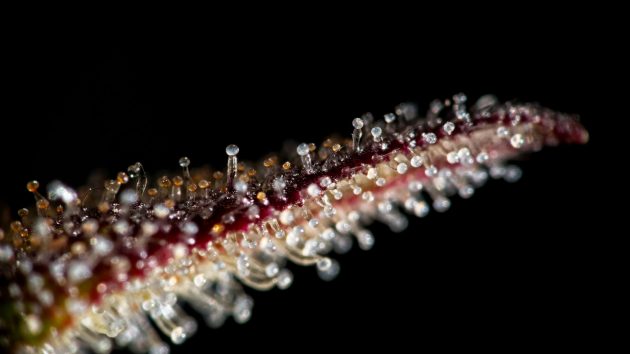
Trichomes on a cannabis leaf
Gleti/Getty
6. Be extra courteous when using someone else’s dab rig.
Dabbing is the practice of inhaling smoke or vapor from a small amount of cannabis concentrate that’s been heated to high temperatures. That requires a tool called a dabbing rig, which is made of a glass chamber, a mouthpiece, and a heated, removable section called a nail or banger. “The precision of dabbing is exquisite,” Post writes. “With temperature control and products that are tailor-made for specific terpene-cannabinoid combinations, dabbing is the luxury automobile of cannabis consumption: elegant and powerful.”
If it’s your dab rig, be sure to communicate what you are offering to guests, recommends Post. It is common, but not required, for the dab rig owner to prepare the dab. If it’s not your dab rig, be respectful and offer to clean the nail after you’ve used it.
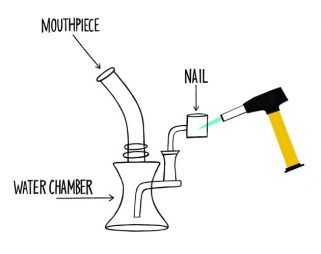
A dab rig
Sam Kalda/Higher Etiquette
7. The correct amount to provide if you’re hosting.
A good host or hostess provides enough flower for everyone. A quarter to a half gram of flower per guest per consumption session is a good rule of thumb. Say, for example, you expect each person to partake in three sessions during a party, “think 0.2 grams x 8 guests x 3 sessions = 4.8 grams for the evening,” writes Post.
“If you’re serving joints, a 0.7-gram joint (a large preroll) will be good for three to five people… Try to estimate one three-to-five person joint for every two to three hours if consuming throughout the night.”
For more serious hosts, Post recommends stocking a cannabis bar with a couple of different cannabis strains, kief, a variety of concentrates with options for dabs or vaping, a selection of edibles, and topicals (e.g. creams, patches, and gels).
8. Setting the table for cannabis-paired meals.
“Philip Wolf [of cannabis dining company Cultivating Spirits] came up with this great table setting—I mean, Emily Post would be so proud—that places your bowl on the left and your lighter on the right and a little dish with your herbs up above the bowl to the left,” Post says. “He really thought about, ‘What am I going to pick up most naturally?’ ‘Which hand am I going to want my lighter in?’ And it really came from a very tried and true Emily Post place of convenience and practicality.” Here’s a diagram:
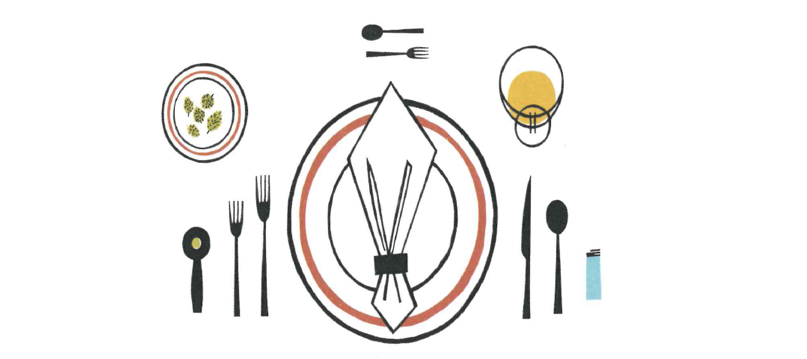
For a meal paired with cannabis, place the pipe to the left of the setting with a dish of cannabis above the pipe and place the lighter and hemp wick (as applicable) to the right.
Sam Kalda/Higher Etiquette
9. If you attend a weed wedding, keep the attention on the couple—not the free weed.
Weed at weddings is becoming increasingly common in legalized states. If you go: Be sure to celebrate your hosts and not just the free bud, be mindful of designated consumption areas, and if the couple is into pot, “a cannabis-related product or piece of equipment or a cannabis experience would make a great wedding gift,” Post writes.
“You should just expect to have it be around you, and you should expect for people to be high,” Post says. “But you should expect to really enjoy it. It makes everything really fun… The places I’ve been where that’s happened, or it’s just been a part of a party, people have really, really enjoyed it.”
But above all, do what will make you most comfortable—weddings are about having fun and celebrating.
10. At a dispensary, don’t talk about taking cannabis out of state. And don’t touch the flower.
While dispensary rules may vary, there are a few don’ts to keep in mind.
- Don’t talk about taking anything out of state. If you mention planes, luggage, or shipping “the budtender may ask you to leave,” Post warns in her book.
- Don’t touch. If you break a jar of cannabis, the flower inside will be unsafe to sell. “It’s pretty much the biggest faux pas you can make,” she writes. The best option is to avoid picking up the jars. The same rule goes for flower: Instead of inspecting flower with your fingers, which are covered in oil and germs, use dispensary-provided tongs.
- Don’t insult the bud or the budtender opinions. “Most dispensaries are proud of their growers, and if you don’t have something nice to say, it’s best to avoid saying anything at all.”

